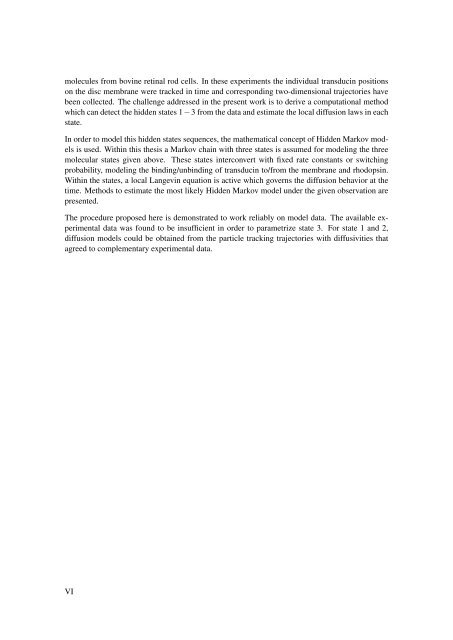Diffusion Processes with Hidden States from ... - FU Berlin, FB MI
Diffusion Processes with Hidden States from ... - FU Berlin, FB MI
Diffusion Processes with Hidden States from ... - FU Berlin, FB MI
Create successful ePaper yourself
Turn your PDF publications into a flip-book with our unique Google optimized e-Paper software.
molecules <strong>from</strong> bovine retinal rod cells. In these experiments the individual transducin positionson the disc membrane were tracked in time and corresponding two-dimensional trajectories havebeen collected. The challenge addressed in the present work is to derive a computational methodwhich can detect the hidden states 1−3 <strong>from</strong> the data and estimate the local diffusion laws in eachstate.In order to model this hidden states sequences, the mathematical concept of <strong>Hidden</strong> Markov modelsis used. Within this thesis a Markov chain <strong>with</strong> three states is assumed for modeling the threemolecular states given above. These states interconvert <strong>with</strong> fixed rate constants or switchingprobability, modeling the binding/unbinding of transducin to/<strong>from</strong> the membrane and rhodopsin.Within the states, a local Langevin equation is active which governs the diffusion behavior at thetime. Methods to estimate the most likely <strong>Hidden</strong> Markov model under the given observation arepresented.The procedure proposed here is demonstrated to work reliably on model data. The available experimentaldata was found to be insufficient in order to parametrize state 3. For state 1 and 2,diffusion models could be obtained <strong>from</strong> the particle tracking trajectories <strong>with</strong> diffusivities thatagreed to complementary experimental data.VI









